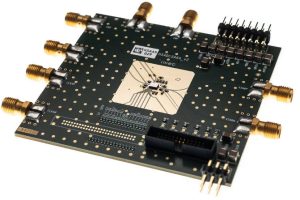
The base station ADC operates over bands up to 5GHz.
It is a 10Gsample/s cmos hierarchical time-interleaved ADC that delivers 9 ENOB (effective number of bits) at low frequencies and 8.2 ENOB at Nyquist. SFDR (spurious-free dynamic range) is >60dB up to 5GHz bandwidth. Consumption is 350mW.
The handset ADC has a multi-bit pipelined architecture with background calibration.
“While the multi-bit approach is known to offer several advantages, such as high linearity, bandwidth and power efficiency, it also presents challenges,” said Imec programme manager Joris Van Driessche: “Our implementation addresses these through the use of background calibration to calibrate DAC mismatch and inter-stage gain.”
It achieves 10.91 ENOB and 81dB SFDR at 1Gsample/s while consuming 17.8mW, “resulting in a Walden figure-of-merit of 9.2fJ/conversion step”, said Imec.
“With these ADCs, both of which are available for licensing, we are introducing two key building blocks for enabling beyond-5G
communications,” said Van Driessche. “Our next goal is to develop basestation ADCs that support FR3 frequencies – 6 to 20GHz -while maintaining linearity, using sub-5nm CMOS nodes.”
Beyond 5G frequencies
At last year’s WRC-23 ITU World Radio Conference, four new bands were were allocated to 6G (and 4G and 5G) mobile comms: 3.3-3.4GHz, 3.6-3.8GHz, 4.8-4.99GHz and 6.425-7.125GHz. At the same event, bands at 2GHz and 2.6GHz were identified for high-altitude flying basestations.
VLSI Symposium, or IEEE Symposium on VLSI Technology & Circuits to give it its full name, is on in Honolulu, Hawaii, ending tomorrow (20 June 2024).
 Electronics Weekly Electronics Design & Components Tech News
Electronics Weekly Electronics Design & Components Tech News



